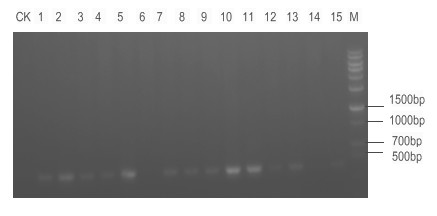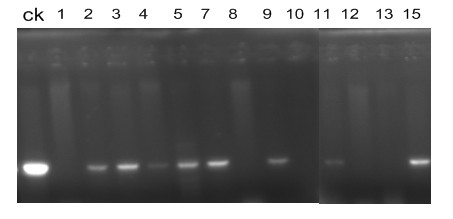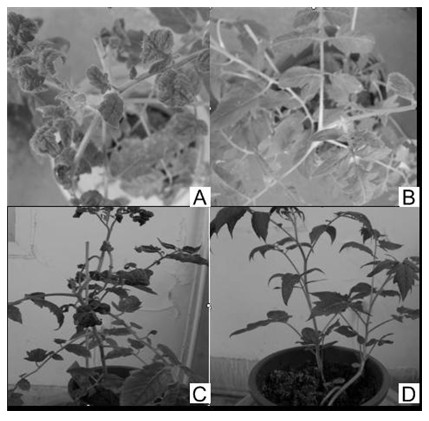Method for cultivating anti-TYLCV (Tomato Yellow Leaf Curl Virus) tomato plant by using RNAi technology
A kind of tomato technology, applied in the field of breeding TYLCV-resistant tomato, genetic transformation of crops (tomato) and selection of new transgenic varieties
- Summary
- Abstract
- Description
- Claims
- Application Information
AI Technical Summary
Problems solved by technology
Method used
Image
Examples
Embodiment Construction
[0046] 1. Construction of V2 and C1 gene RNAi vectors of TYLCV
[0047] 1.1 Extraction of total plant DNA
[0048] Use the CTAB method to extract DNA from tomato plant diseased leaf samples with typical symptoms of TYLCV (curling of top new leaves and ear protrusions). The specific steps are as follows: Take 1g of fresh leaves, grind them into powder with liquid nitrogen, transfer them to a 1.5 ml centrifuge tube, add 600 μl preheated CTAB lysate (Table 1), vortex to mix, 65 ℃ water bath for 1 hour, add 600 μl chloroform-isoamyl alcohol (24:1), invert 50 times to mix, centrifuge at 10000 rpm for 15 minutes, take the supernatant in a new 1.5 ml centrifuge tube, add an equal volume of pre-cooled isopropanol, mix well, place at -20°C for 30 minutes, centrifuge at 12000rpm for 15 minutes, discard the supernatant, add 1ml 75% alcohol to wash the DNA precipitate, discard the alcohol, air dry, add 100μl TE to dissolve DNA was stored at 4°C for later use.
[0049]
[0050] Table 1 ...
PUM
 Login to View More
Login to View More Abstract
Description
Claims
Application Information
 Login to View More
Login to View More - R&D
- Intellectual Property
- Life Sciences
- Materials
- Tech Scout
- Unparalleled Data Quality
- Higher Quality Content
- 60% Fewer Hallucinations
Browse by: Latest US Patents, China's latest patents, Technical Efficacy Thesaurus, Application Domain, Technology Topic, Popular Technical Reports.
© 2025 PatSnap. All rights reserved.Legal|Privacy policy|Modern Slavery Act Transparency Statement|Sitemap|About US| Contact US: help@patsnap.com



